 |
Tigers |
2.00 |
This course will provide an introduction to tigers, including an overview of physical characteristics, habitat, behavior, reproduction and the conservation efforts dedicated to protecting this species.
|
 |
Contentious Relationships |
1.50 |
This course will provide the foundation for maintaining healthy romantic relationships. It will also allow you to reflect on past and current relationships and identify why they failed. Finally, it will give you the skills to recognize red flags in potential love interests and within yourself. This course will teach you to minimize the effects of contentious relationships on your life, as well as on the lives of your children. |
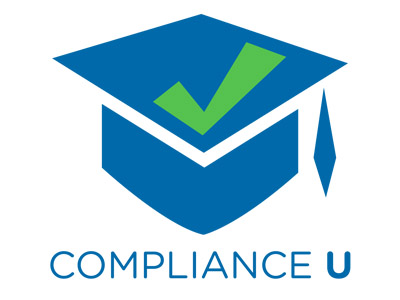 |
Sexual Harassment Prevention for Employees |
1.00 |
This course will provide you with an overview - defining sexual harassment and general harassment, giving examples of prohibited behaviors, explain the responsibilities of you and your organization and teach you about liability. |
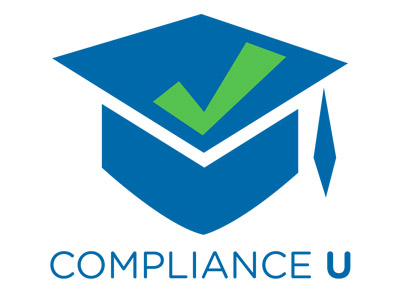 |
Sexual Harassment Prevention for Employees (Corrections) |
1.00 |
This course will provide you with an overview - defining sexual harassment and general harassment, giving examples of prohibited behaviors, explain the responsibilities of you and your organization and teach you about liability. |
 |
Dyslexia |
1.00 |
This course will provide you with an overview of dyslexia to help you understand what it is all about, the challenges a student with dyslexia faces, and the best ways in which teachers can effectively support students with this disability. |
 |
Customer Service: Using What You've Learned |
0.25 |
This course will provide you with the information and—we hope—the inspiration to improve your customer service skills and work toward personal success. The final two steps are up to you: You must implement what you have learned, and continue to work on improving your skills. |
 |
Customer Service: Using What You've Learned (Corrections) |
0.25 |
This course will provide you with the information and—we hope—the inspiration to improve your customer service skills and work toward personal success. The final two steps are up to you: You must implement what you have learned, and continue to work on improving your skills. |
 |
Creating a Safe and Respectful Environment for Our Nation's Children and Youth |
0.75 |
This course will provide you with the knowledge and skills to create safer, more inclusive environments for children. You will learn about the dynamics of bullying, the impact it has on those who are bullied, and strategies for prevention. |
 |
Environmental Enrichment and Adaptive Relevance in Zoos |
1.00 |
This course will review the history and philosophy behind environmental enrichment with a heavy emphasis on the relationship between individual species and their direct environment. We will explore novel ways to make enrichment an integrated component to the daily workload, and structuring programs that elicit natural behaviors in both frequency and diversity. Finally we will develop the concept of adaptive relevance using several taxonomic examples to further illustrate the boundless possibilities behavior-driven environmental enrichment provides. |
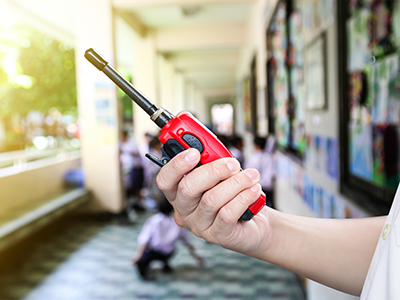 |
Emergency Protocols for School Settings |
1.25 |
This course will take you through various topics related to emergency protocols in schools. You will learn how an Emergency Operations Plan is created and implemented. This course will help you understand your role in supporting before, during, and after school threats and hazards. This course will also explain the various assessments schools use to determine which threats and hazards are necessary to prepare for, how to collaborate with local and state organizations, and what items are necessary to include in an Emergency Operations Plan. |
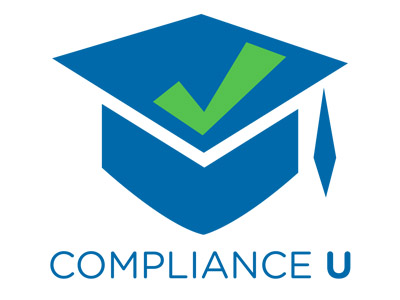 |
Preventing Sexual Harassment and Understanding California Law |
0.50 |
This course will teach California employees how to recognize sexual harassment, defines the rights and responsibilities of employers and employees, and provides an overview of the legal remedies available in sexual harassment lawsuits. |
 |
Preventing Sexual Harassment and Understanding California Law (Corrections) |
0.50 |
This course will teach California employees how to recognize sexual harassment, defines the rights and responsibilities of employers and employees, and provides an overview of the legal remedies available in sexual harassment lawsuits. |
 |
Customer Management |
1.00 |
This course will teach you about handling dissatisfied customers. You will learn how to maintain composure and be professional through both verbal and nonverbal communication. You’ll learn the difference between upset and angry customers and how to handle each. With angry customers, you will learn how to listen, remain calm, avoid negative filters, and express empathy. Then, with upset customers, you’ll be taught methods for making your service to them more effective. Finally, you will learn how to manage, recognize, and reduce your own stress to better serve your customers. |
 |
Interviewing Skills |
1.00 |
This course will teach you about the different types of interviews, how to prepare for an interview, important interview etiquette, how to stand out among other candidates, how to decide whether to accept or decline a job offer, and the types of questions which interviewers cannot ask. |
 |
Project Management - Basic: Time Management |
1.25 |
This course will teach you how to identify the components of time management, identify the purpose of activity definition and sequencing, and recognize different diagramming techniques. You will also learn how to identify the factors that affect activity duration, and identify techniques for estimating activity duration. |
 |
Freelance Work |
0.50 |
This course will teach you what freelance work is and why it's becoming a common career path for many professionals. Freelance work is completed by people known as freelancers, who are self-employed rather than having a permanent employment to a singular company. This type of work involves short-term jobs, such as gigs or temp jobs. |
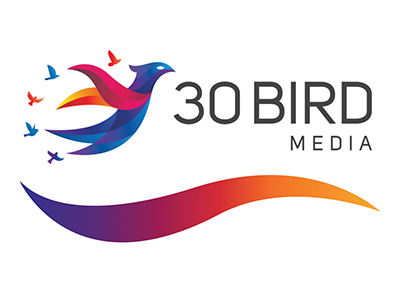 |
CWNP Certified Wireless Technician - Exam CWT-101 |
8.00 |
This entry-level certification (Certified Wireless Technician - Exam CWT-101) is offered by Certified Wireless Network Professionals, or CWNP, as part of a vendor-neutral wireless certification program.
According to CWNP, the Certified Wireless Technician (CWT) should be able to install APs based on a design document, configure the AP for initial operations and ensure connectivity, troubleshoot basic problems, and assist users in-person or through remote communications in problem resolution. Perhaps the most important skill is the ability to set up a WLAN client for connectivity, including SSID configuration, security settings, and other client adapter settings. |
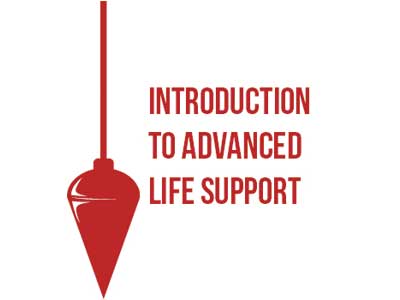 |
ALS Airway Response - Part Three |
0.75 |
This final session offers some thoughts on what should be accomplished when attempting to intubate the sickest of patients. This is a brief overview that allows the new ALS provider a chance see what should be learned. Think of this as an opportunity to learn how to assist RSI technicians with what they do.This is a very challenging exam, please take your time. You have two attempts to gain a 70% or higher. Good luck! |
 |
Animal Nutrition |
2.00 |
This interactive course presents a dietary case study and then teaches you the basics needed to manage similar nutritional challenges. After completing the course, you will be able to name basic nutrients, understand feeding ecologies, explain differences in species’ digestive tracts, identify standard animal feeds, and understand how body condition is measured. In addition to having a better grasp of the science behind nutrition, you will learn about the storage and preparation of diets, safe food handling techniques, and how to ensure food is safe for animals. |
 |
Fireground Operations: Safe Strategy |
2.00 |
This introductory course describes fireground strategy selection to create a safe operation. The course introduces the concept of safe fireground strategy and presents a procedure for selecting a strategy through risk assessment. Two operational modes are established, and five strategic plan options are defined for each mode. The course focuses on fire safety principles and scene safety awareness. The course is evaluated with a multiple-choice exam and requires a passing score of 80%. The clock time for this course is approximately two hours. |
 |
Lithium-Ion Battery - INTRODUCTION |
1.50 |
This introductory course is an awareness-level presentation that educates firefighters on the impact of lithium-ion batteries on fire service operations. The course defines the lithium-ion battery, describes the chemistry of the battery, and identifies the applications using this technology. The lessons of this course assess the hazards of the lithium-ion battery, evaluate the associated risk, and identify operational mitigations to reduce firefighter risk exposure when encountering fires related to this technology. |
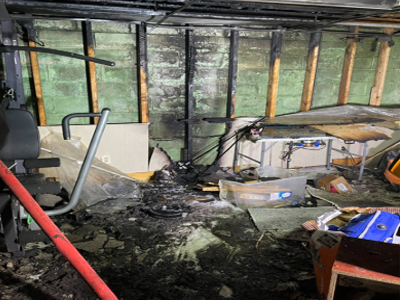 |
Understanding Overhaul Operations |
0.50 |
This introductory level course introduces the concept of overhaul operations. The course will describe techniques used to identify, locate, expose, and extinguish hidden areas of fire while maintaining loss control and preserving evidence of fire origin. This course is evaluated with a final quiz. The clock time for this course is approximately one-half clock hours. |
 |
Salvage Operations |
1.00 |
This introductory level course introduces the concept of salvage operations. The course defines salvage operations and describes techniques used to protect buildings and contents from damage caused by fire suppression operations and preserve evidence of fire origin. This course is evaluated with a final quiz. The clock time for this course is approximately one clock hour. |
 |
Basic Building Construction (NYS04) |
1.00 |
This is a basic lesson for the introduction or review of building construction for the firefighter. The lesson defines five types of building construction and identifies the risks and hazards associated with fighting fires in these structures. The lesson is evaluated with a final multiple-choice quiz. A grade of 80% or better is required to pass this course. |
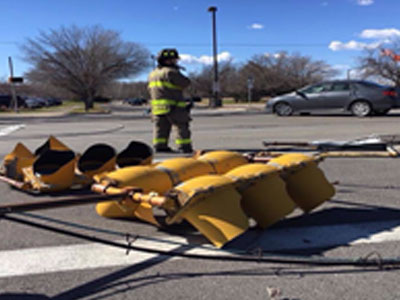 |
Utility Pole Incidents (NYS05) |
1.00 |
This is a basic lesson for the introduction or review of the utility pole for the firefighter. The lesson defines types of utility poles and identifies the risks and hazards associated with operating at incidents that involve them. The lesson is evaluated with a final multiple-choice quiz. A grade of 80% or better is required to pass this course. |


























